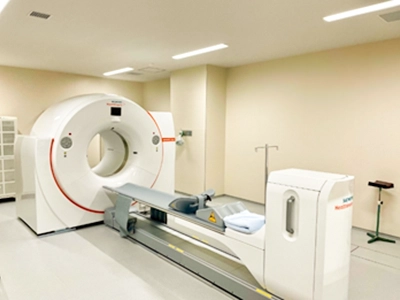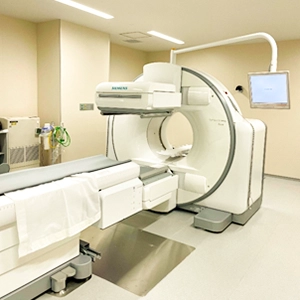Nuclear Medicine
PET-CT Scan

A PET-CT scan is an examination that uses a drug called FDG, which is similar to glucose. After injection, FDG accumulates in areas of the body that consume large amounts of glucose, such as sites of inflammation or cancer. By capturing the radiation emitted from the accumulated FDG with a specialized camera, this scan allows for a comprehensive assessment of diseases throughout the entire body with a single injection.
The introduction of a state-of-the-art PET-CT scanner equipped with a semiconductor detector has enabled faster and higher-resolution imaging compared to conventional systems.
Test Details
First, a drug called FDG, which is similar to glucose, is injected into a vein. Since the drug gradually spreads throughout the body, patients are asked to rest on a sofa for about an hour.
During this time, to ensure that the drug properly accumulates in the targeted area or condition being examined, kindly note that patients should refrain from activities that engage muscles, such as reading or using a smartphone.
Before the test, the patient will be asked to urinate to remove excess medication from the body. The patient will be photographed for approximately 20 minutes after urinating. Depending on the radiological technologist's judgment, multiple examinations may be performed.
SPECT-CT Scan

A SPECT-CT scan involves administering a radioactive substance into the body and capturing its distribution using a specialized external camera. This examination not only identifies the location of diseases but also visualizes various bodily functions and conditions.
Test Details
The content and methods of SPECT-CT scans vary depending on the purpose and target area. This section provides an introduction to only a selection of available examinations.

